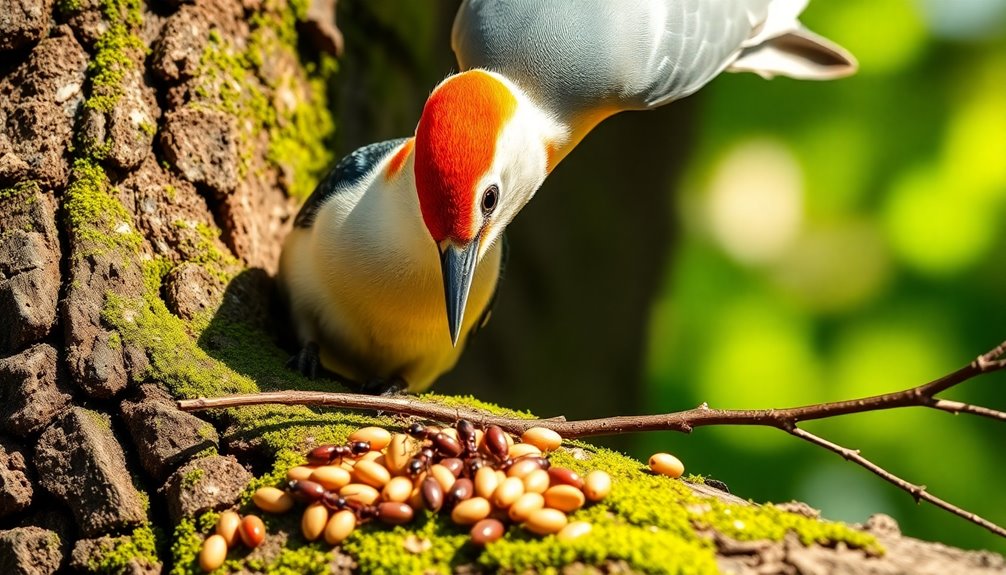Ideal Foraging Theory helps you understand how animals choose food sources to maximize energy intake and minimize effort. You'll notice they evaluate the energy gained from a food item versus the energy spent to get it. This decision-making process includes factors like prey abundance, predation risk, and competition. By analyzing these behaviors, you see the evolutionary benefits behind these choices. It not only sheds light on animal behavior but also informs conservation strategies and pest management. If you're intrigued, there's much more to uncover about how these principles shape life in our ecosystems!
Key Takeaways
- Optimal Foraging Theory explains how animals make foraging choices to maximize energy intake while minimizing energy expenditure.
- The Marginal Value Theorem helps determine the optimal time to spend in food patches before moving on to maximize efficiency.
- Factors like energy reserves, predation risk, and prey density significantly influence foraging behavior and decision-making processes.
- Evolutionary adaptations shape unique foraging strategies, driven by natural selection and environmental pressures over time.
- OFT has practical applications in ecology, conservation, agriculture, and understanding ancient human foraging behaviors.
Overview of Optimal Foraging Theory
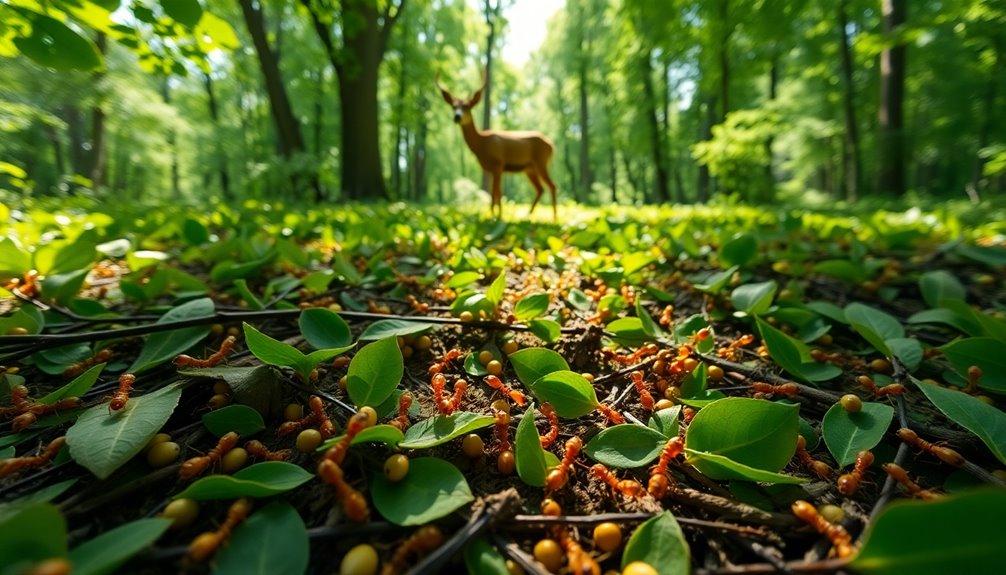
Ideal Foraging Theory (OFT) sets out to explain how animals make decisions while foraging to maximize their energy intake. At its core, ideal foraging theory focuses on how foragers assess the energy gain from various food sources against the energy expenditure involved in obtaining them. This leads to a net energy gain that influences their foraging behavior.
The Marginal Value Theorem plays an essential role here, guiding foragers in determining how long to stay in a food patch before moving on, considering diminishing returns.
When evaluating prey choice, animals weigh the benefits of different food items against the costs of capturing them. This decision-making process hinges on the forager's ability to enhance foraging efficiency, ensuring that each meal contributes positively to their overall energy budget.
Cost-benefit analyses are crucial in this situation, helping animals navigate their feeding systems effectively. While OFT offers valuable insights into dietary choices and predator-prey dynamics across multiple species, it has faced critiques for its oversimplifications and the necessity for empirical validation in complex ecological settings.
Understanding these concepts enhances our appreciation for the intricate strategies animals employ in their quest for survival. Additionally, early exposure to STEM education can help children develop critical thinking skills that mirror the decision-making processes seen in foraging behaviors.
Factors Influencing Foraging Behavior
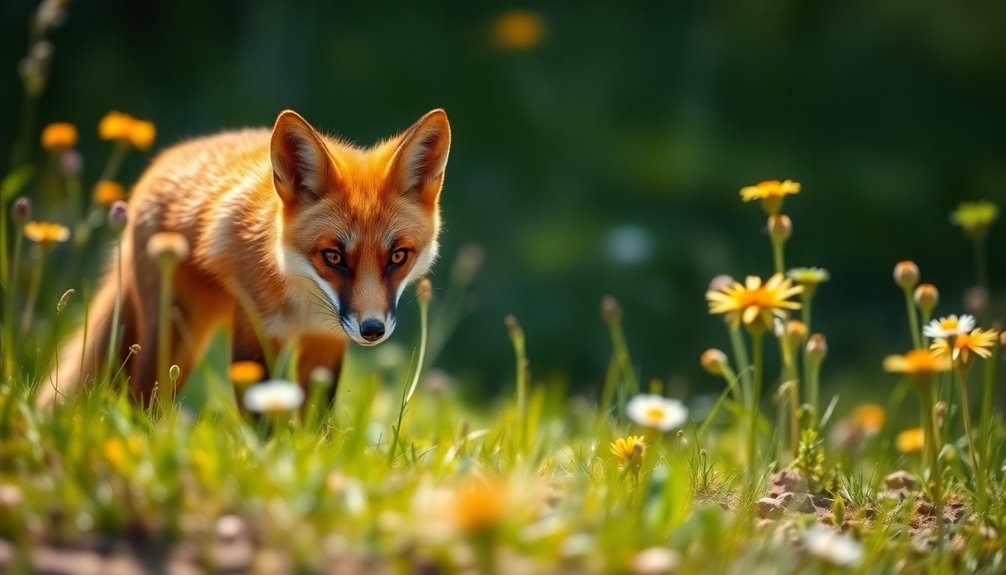
When animals forage, a variety of factors come into play that shape their behavior and decision-making processes. These influences can determine the success of their foraging efforts and their overall survival.
Here are four critical factors that you should consider:
- Energy Reserves: Animals often prioritize foraging based on their current energy levels. Low energy may push them to seek food more urgently.
- Predation Risk: Safety is paramount. Animals might alter their foraging locations and times to avoid becoming prey, impacting their overall energy intake.
- Prey Density: The availability of food sources in a habitat directly influences foraging strategies. Higher prey density usually leads to more efficient foraging.
- Competition: The presence of competitors can force animals to adapt their foraging methods or diets, which can change their ideal decision rule.
These factors interact dynamically, shaping adaptive foraging strategies.
The typical foraging sequence—search, prey detection, approach, pursuit, handling, and consumption—is influenced by these constraints.
Understanding these elements helps reveal the complexities of foraging behavior and the choices animals make in the wild.
Evolutionary Perspectives on Foraging
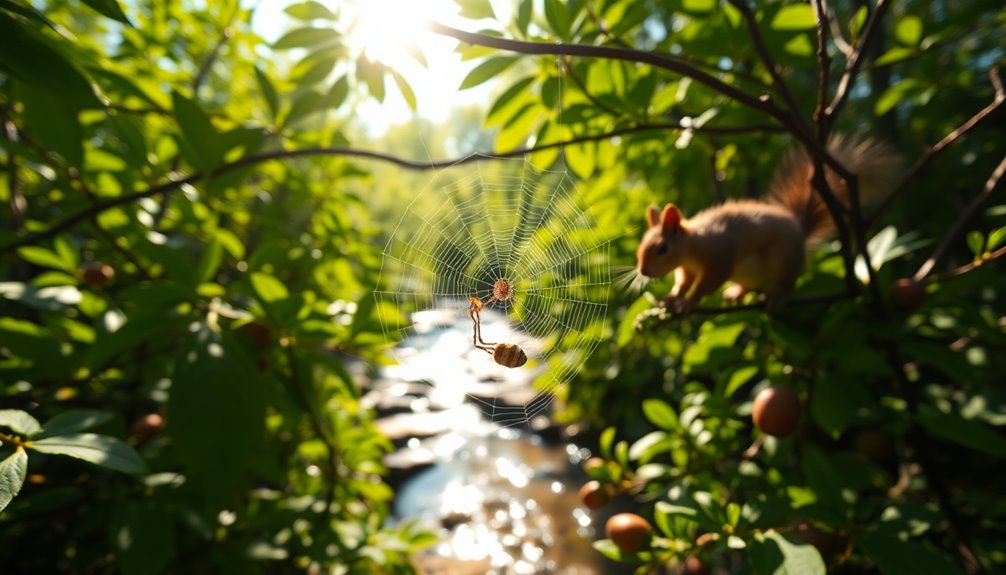
Foraging isn't just a matter of chance; it's an intricate dance shaped by evolution. Ideal foraging theory suggests that animals develop foraging strategies through natural selection to maximize energy gain while minimizing energy expenditure. This process highlights the concept of evolutionary plasticity, where different species independently develop unique foraging behaviors in response to varying prey availability and environmental pressures.
Historically, foraging behavior reveals deep-rooted traits linked to ancestral adaptations. For instance, observe cordylid lizards: their shift from sit-and-wait to active foraging illustrates how ecological niches influence dietary adaptations. Each strategy is a response to the specific demands of their environment, showcasing the diversity of foraging behavior shaped by evolutionary forces.
Moreover, coevolutionary dynamics play a significant role in foraging. As predators adapt, prey evolve defenses, prompting corresponding shifts in foraging strategies. This ongoing interaction between predator and prey exemplifies principles of behavioral ecology, where adaptations continually refine foraging efficiency. Furthermore, the success of these strategies can be influenced by factors such as nutrition, which is essential for overall survival and efficient foraging behavior.
Ultimately, understanding these evolutionary perspectives on foraging enriches your appreciation for the complex choices animals make in their quest for survival.
Applications of Optimal Foraging Theory

Optimal Foraging Theory (OFT) offers valuable insights into various fields by predicting how animals feed based on food availability and energy costs. Its applications are vast and impactful, helping you understand ecological and human behaviors alike.
Here are four notable areas where OFT shines:
- Ecological Interactions: By analyzing how species interact over food resources, OFT sheds light on population dynamics and competition.
- Conservation Efforts: OFT identifies essential habitats crucial for species survival, guiding effective habitat management and restoration practices.
- Archaeological Analysis: You can explore ancient human foraging strategies, revealing how early humans balanced nutritional value and energy expenditure in resource selection.
- Agricultural Pest Management: Understanding pest foraging behavior through OFT equips you with strategies to control populations and minimize damage.
Incorporating these applications into your understanding of Optimal Foraging Theory not only enhances your grasp of animal foraging behavior but also empowers conservation and resource management efforts.
You're witnessing the intersection of nature's choices and human impact, making OFT a crucial tool in addressing ecological challenges.
Limitations and Future Research Directions
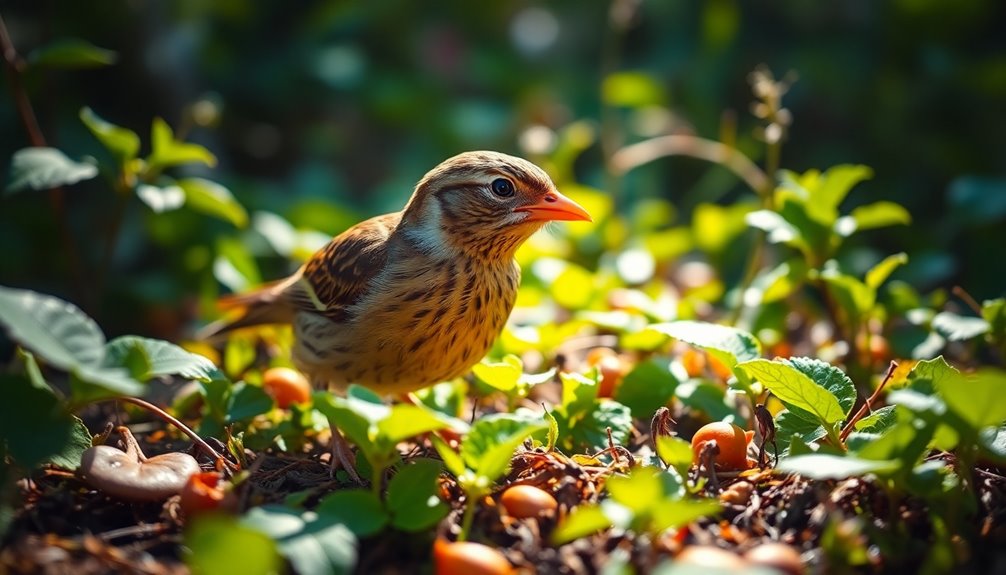
While Ideal Foraging Theory (OFT) provides a solid framework for understanding feeding behaviors, it has notable limitations that challenge its predictive power. Many species don't seem to maximize energy efficiency in their foraging actions, which questions OFT's assumptions about fitness maximization.
Complex ecological contexts, such as social dynamics and environmental variability, often influence foraging choices in ways that OFT doesn't fully account for.
Future research should focus on empirical validation of OFT models through field studies that consider behavioral flexibility. It's essential to explore how rapid environmental changes affect foraging strategies.
Additionally, investigating self-medication behaviors could enhance our understanding of diet choice models, revealing the complexities in foraging decisions.
Moreover, delving into the genetic basis of foraging strategies can provide deeper insights into adaptive behaviors. By integrating advanced tracking technologies, you can gain a clearer picture of how organisms adapt their foraging in changing ecosystems.
Addressing these limitations will help refine OFT and improve its relevance to real-world scenarios, ultimately enriching our understanding of foraging behaviors across various species.
Frequently Asked Questions
Why Is Optimal Foraging Theory Important?
Ideal foraging theory's important because it helps you understand how animals make choices about where and what to eat.
By analyzing how they maximize energy intake while minimizing effort, you gain insights into their survival strategies.
This understanding also applies to human behavior and resource management, influencing conservation efforts and ecological studies.
Ultimately, it reveals how species adapt to their environments, ensuring they thrive despite changing conditions.
What Is the Major Assumption of Optimal Foraging Theory Is That Energy Is?
The major assumption of Ideal Foraging Theory is that energy is a vital currency for organisms.
You'll find that when foraging, animals aim to maximize their energy intake to enhance their survival and reproductive success. They choose food sources that offer the highest energy gain relative to the time spent foraging.
It's all about balancing the energy costs, like search and handling time, against the energy benefits from their chosen prey.
Why Is It Important to Study Foraging Behavior?
Studying foraging behavior is essential because it reveals how animals maximize their energy intake, which directly impacts their survival and ecological interactions.
By understanding these strategies, you can predict how species adapt to environmental changes, like habitat loss or climate shifts.
This knowledge not only aids in conservation efforts but can also enhance agricultural practices and inform decision-making in economics and psychology, ultimately benefiting both wildlife and human societies.
What Is the Foraging Theory in Ecology?
Foraging theory in ecology explains how animals search for food in ways that maximize their energy intake while minimizing effort.
You'll find that animals assess resource availability, competition, and predation risks when deciding where and when to forage.
It helps you understand their choices, revealing patterns in behavior that reflect adaptations to their environments.
Conclusion
In understanding ideal foraging theory, you uncover the intricate dance of nature's choices. As animals weigh risks against rewards, you start to see the delicate balance guiding their survival. But what happens when environments change? Will their strategies hold up, or will they falter? As researchers explore deeper, the answers might surprise you, revealing a world where every meal is a gamble. Stay curious—there's so much more to discover about the choices that shape life itself!

